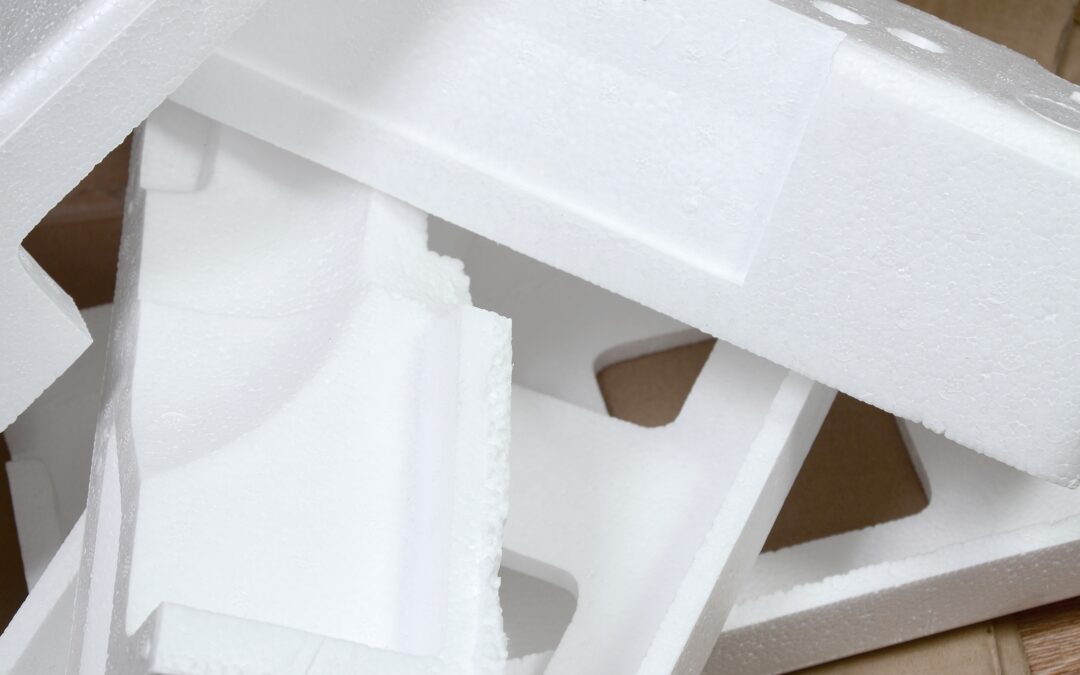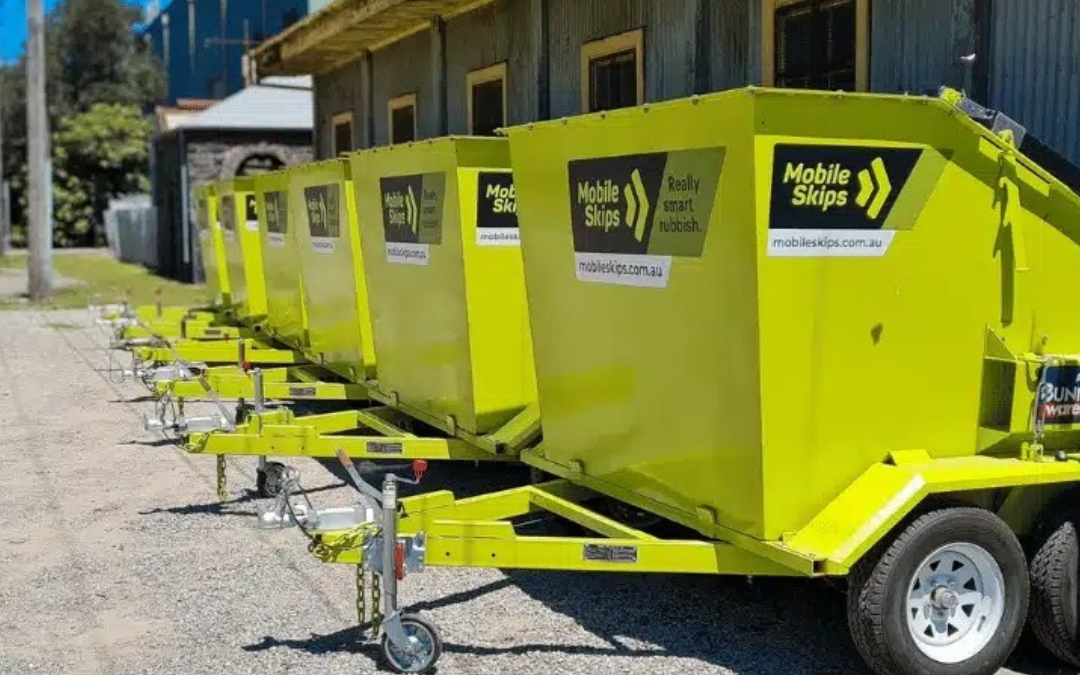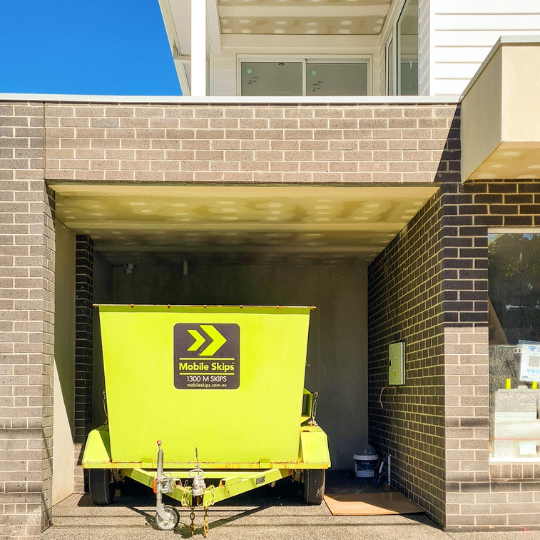The Importance of Managing Waste During a Kitchen Renovation
When embarking on a kitchen renovation, effective kitchen renovation waste management is crucial. Kitchen renovations generate a substantial amount of waste, ranging from old cabinets and countertops to flooring and appliances. Efficient disposal of this waste is vital for maintaining a safe and organised work environment. Moreover, improper management can lead to environmental and financial concerns (Science Direct).
Understanding the composition and volume of kitchen renovation waste helps in planning for its disposal correctly. Ensuring waste is sorted, recycled, or properly disposed of can significantly reduce your project’s environmental impact. By proactively managing waste, you contribute to a more sustainable built environment (Tallbox Design).
How Effective Waste Management Can Keep Your Project on Track
Effective waste management plays a crucial role in keeping your kitchen renovation project on schedule. Proper disposal and recycling of debris ensure a clean and safe working area, which can prevent hazards and interruptions. For instance, managing hazardous materials such as asbestos and lead-based paint properly can prevent work stoppages and health risks.
Additionally, having a well-organised waste management plan aids in the efficient removal and sorting of renovation debris. This plan could include the use of skip bins, which are ideal for large volumes of waste, such as wood, drywall, and tiles (Waste Away Systems). Skip bins can also be used for materials that can be recycled into strong, reusable aggregates (Recycling Bristol).
By implementing strategies such as:
- Creating a waste removal schedule
- Regularly sorting and removing waste
- Maximizing bin space by compacting and organizing debris
you can ensure that your renovation is smooth and efficient. For more insights on managing renovation waste, refer to our articles on home renovation waste and renovation waste.
An efficiently managed waste disposal process not only keeps your project on track but also supports overall project success, from start to finish. Managing your waste effectively is key to a successful kitchen renovation.
Planning Your Kitchen Renovation Waste Management
Managing kitchen renovation waste effectively begins with a solid plan. An organised approach helps in keeping your project on track while ensuring minimal environmental impact. Here’s how to plan your waste management strategy during your kitchen renovation.
Estimate the Amount of Waste Your Renovation Will Generate
Before starting your renovation, estimate how much waste your project might generate. This involves assessing the materials being replaced and understanding the volume of waste they will produce.
| Type of Waste | Estimated Volume (cubic metres) |
|---|---|
| Cabinets and Countertops | 1 – 2 |
| Flooring | 1 – 2 |
| Plumbing and Fixtures | 0.5 – 1 |
| Electrical Waste | 0.2 – 0.5 |
| Appliances | 1 – 3 |
| Drywall and Wall Cladding | 1 – 2 |
| Hazardous Materials | 0.1 – 0.3 |
Understanding the volume of waste helps in determining the size and number of skip bins needed. For instance, deconstruction, the process of carefully dismantling structures to salvage components for reuse, can significantly reduce waste generated (EPA-SMM).
Make a Waste Disposal Plan Before Starting the Renovation
Having a waste disposal plan in place is essential. Decide which waste materials will be disposed of in skip bins, which can be donated, and which must be taken to a proper disposal facility.
Key points to consider:
- Use an e-waste service for electrical materials like wiring, outlets, and light fixtures.
- Arrange for a recycling service for large appliances like fridges, stoves, and dishwashers.
- Utilize local hazardous waste facilities for paints, solvents, and adhesives.
Composting and effective waste sorting are essential in minimising environmental impact (Green City Times). Consult with your local council for guidelines on disposing of specific materials.
Set a Timeline for Waste Removal at Each Stage of the Renovation
Creating a timeline for waste removal helps in keeping the renovation site clean and organised. Break down the renovation process into stages and set specific dates for waste removal.
Example timeline:
- Week 1: Remove old cabinets and countertops.
- Week 2: Dispose of old flooring.
- Week 3: Remove plumbing fixtures and non-hazardous waste.
- Week 4: Dispose of electrical waste and large appliances.
- Week 5: Clear out drywall and wall cladding.
- Week 6: Dispose of any remaining hazardous materials.
This organised approach ensures that waste does not pile up, causing disruptions to your renovation project. Regularly organizing waste also helps in maximizing bin space by compacting and efficiently organizing waste. For more tips on this, visit our article on renovation waste management.
By planning ahead, estimating waste volume, making a disposal plan, and setting a timeline, you can manage waste effectively during your kitchen renovation. This not only keeps your project on track but also reduces environmental impact, making your renovation smoother and more sustainable. For further guidance, explore our resources on home renovation waste and sustainable waste removal.
Types of Kitchen Renovation Waste and How to Handle Them
Managing kitchen renovation waste efficiently is crucial for a successful project. Understanding the types of waste and how to properly dispose of them will keep your renovation on track.
Cabinets and Countertops
Can Go in Skip Bins
- Wooden, laminate, stone, and metal cabinets and countertops
Disposal Tip
- Break down large items to fit more efficiently in skip bins.
Flooring (Tiles, Wood, Laminate)
Can Go in Skip Bins
- Tiles, wood, vinyl, and laminate flooring
Disposal Tip
- Stack neatly to save space and minimise trips to waste facilities.
Plumbing and Fixtures
Can Go in Skip Bins
- Old sinks, taps, pipes (non-hazardous)
Disposal Tip
- Make sure pipes are drained of any remaining liquids before disposal.
Electrical Waste
Suitable for Mobile Skips Bins
- Wiring, outlets, light fixtures, and appliances
Disposal Tip
- Use an skip bin to properly dispose of electrical materials.
Appliances
Not Suitable for Skip Bins (but still accepted)
- Large appliances like fridges, stoves, and dishwashers can tick up in weight
Disposal Tip
- Arrange for a dedicated recycling service for appliance disposal or choose a skip size to fit your removal.
Drywall and Wall Cladding
Can Go in Skip Bins
- Drywall, plasterboard, and other wall materials
Disposal Tip
- Bag smaller pieces to keep dust under control and use space efficiently. Note that drywall is recyclable for reuse in construction (Waste Away Systems).
Hazardous Materials (Paints, Chemicals, Adhesives)
Not Suitable for Skip Bins
- Paints, solvents, and adhesives
Disposal Tip
- Use local hazardous waste facilities or a council collection service.
Efficiently managing renovation waste involves separating and categorising materials to ensure proper disposal. For more detailed tips on handling different types of waste, visit our guide on removing renovation waste and flooring and carpet removals.
Skip Bins: The Ultimate Solution for Kitchen Renovation Waste
Managing your kitchen renovation waste efficiently is key to keeping your project on track. Skip bins offer a practical and convenient solution for disposing of various types of renovation debris.
4 Cubic Metre Skip Bins: Perfect for Most Kitchen Renovation Projects
A 4 cubic metre skip bin is ideal for most kitchen renovation projects. It offers ample space to accommodate common waste materials such as cabinets, countertops, flooring, and more.
| Item Type | Estimated Waste Volume (cubic metres) |
|---|---|
| Cabinets and Countertops | 1.5 |
| Flooring (Tiles, Wood) | 1 |
| Plumbing Fixtures | 0.2 |
| Electrical Waste | 0.2 |
| Appliances | 1 |
No Council Permits Required with Mobile Skips
One of the biggest advantages of using mobile skips is that they typically do not require council permits. This makes the process of hiring and placing a skip bin much simpler and quicker, allowing you to focus on your renovation tasks. For more information, you can refer to our section on sustainable waste removal.
Tips for Packing Skip Bins Efficiently
Efficient packing of your skip bin ensures that you make the most of the available space, reducing the need for multiple trips to waste facilities.
- Stacking: Stack items neatly to save space. For example, stack wooden planks and tiles horizontally.
- Breaking Down Large Items: Break down large items such as old cabinets and countertops to fit more efficiently.
- Bagging Small Debris: Use bags for smaller debris like drywall pieces and dust to keep your space organized.
By following these tips, you can optimize the space in your skip bin and manage your waste more effectively. For further guidance, check our article on removing renovation waste.
Flexible Hire Periods for Extended Renovation Projects
Every renovation project is unique, and the duration may vary. Mobile skips offer flexible hire periods to accommodate the specific needs of your project. Whether you need the skip for a few days or several weeks, you can adjust the hire period accordingly. This flexibility ensures that you have enough time to complete your renovation without feeling rushed.
Utilizing skip bins is a smart approach to handling kitchen renovation waste. Their convenience, efficiency, and flexibility make them an excellent choice for any home renovation waste project.
How to Stay Organized and Efficient During the Renovation
Proper organisation is essential for a smooth kitchen renovation. By managing your kitchen renovation waste effectively, you can keep the site clean, reduce stress, and ensure the project goes according to plan.
Create a Waste Removal Schedule to Keep the Site Clean
A well-structured waste removal schedule is key for maintaining an orderly renovation site. Planning ahead allows you to systematically remove waste at various stages, preventing build-up and ensuring a clean working environment. Regular removal also keeps pathways clear, mitigating safety hazards.
| Phase | Waste Removal Activity | Frequency |
|---|---|---|
| Demolition | Remove old cabinets, countertops, and flooring | Daily |
| Installation | Dispose of packaging, off-cuts, and debris | Every 2 days |
| Finishing | Remove protective materials and final debris | End of project |
Regularly Sort and Remove Waste to Avoid Pile-ups
Sorting waste periodically during your renovation minimises clutter and makes disposal more efficient. Categories like cabinetry, flooring, and plumbing waste are more manageable when separated. This approach not only keeps the site tidy but also simplifies the recycling and disposal processes.
Steps for Sorting Waste:
- Identify Waste Categories: Cabinets, countertops, flooring, plumbing, fixtures, and appliances.
- Designate Collection Areas: Assign different corners of the worksite for each type of waste.
- Use Clear Labelling: Label waste bins and skip bins to avoid confusion.
- Regular Checks: Conduct waste audits every few days to ensure proper sorting.
For more tips, see our article on reno skip bin waste.
Maximize Bin Space by Compacting and Organizing Waste
Efficiently using your skip bin space can save you multiple trips to waste facilities and reduce costs. Proper packing techniques involve compacting and strategically arranging waste to make the most of the available space.
Tips for Maximizing Bin Space:
- Break Down Large Items: Dismantle bulky items like cabinets and countertops.
- Stack Flooring Materials: Stack tiles, wood, and laminate neatly to save room.
- Bag Smaller Debris: Put small fragments in bags to compact them and simplify handling.
- Avoid Empty Gaps: Fill spaces between large objects with smaller waste items.
For additional insights on efficient waste handling, explore our guide on removing renovation waste.
By implementing these methods, you can manage kitchen renovation waste efficiently, ensuring a smoother and more productive renovation process. Make sure to read more about avoiding hazards and staying compliant through proper waste management in our sections on hazardous waste disposal and demolition waste.
Why Mobile Skips are Perfect for Kitchen Renovation Waste
Convenient and Compact: Perfect for Driveways and Tight Spaces
When managing kitchen renovation waste, a key consideration is the convenience and fit of the skip bin for your space. Mobile Skips are designed to be compact and user-friendly, making them ideal for driveways and tight spaces. You don’t need a large area to accommodate these skips, allowing you to manage waste efficiently without obstructing your renovation project. Their mobility ensures that you can easily move them around your renovation site, ensuring that waste removal is always within reach.
Environmentally Friendly: Responsible Disposal and Recycling
One of the significant benefits of using Mobile Skips is their commitment to environmentally responsible waste disposal. Proper waste management, including effective sorting and recycling, is crucial to minimising environmental impact (Green City Times). Mobile Skips facilitate recycling of materials such as metal, wood, and drywall, ensuring that your renovation waste is disposed of in a sustainable manner. Furthermore, using a Mobile Skip helps you stay organised and make eco-friendly choices in your waste disposal practices, contributing positively to the environment.
No Council Permits Required for Most Sites
Another advantage of Mobile Skips is the convenience of not needing council permits for most sites. Traditional skip bins often require permits, which can add to your planning and administrative tasks. Mobile Skips eliminate this hassle, allowing you to focus on your renovation without the added burden of permit applications. This flexibility ensures that you can start waste removal immediately and maintain the momentum of your project.
1 Tree Planted for Every Skip Hired with Carbon-Neutral Services
Mobile Skips not only provide efficient waste management solutions but also contribute to environmental conservation. For every skip hired, Mobile Skips plant one tree, making their services carbon-neutral. This initiative helps offset the environmental impact of your renovation waste, promoting sustainability and fostering a greener planet. By choosing Mobile Skips, you support eco-friendly waste disposal and contribute to reforestation efforts.
Comparison of Skip Bin Sizes and Their Uses
| Skip Bin Size | Ideal For |
|---|---|
| 4 Cubic Metre (Standard skip) | Small renovation projects, minor clean-ups |
| 4 Cubic Metre (Heavy Skip) | Most kitchen renovation projects |
| 4-6 Cubic Metre (heavy to double skip) | Larger home renovations, significant waste removal |
| 8 Cubic Metre (double skip) | Major home renovations, extensive waste removal |
To ensure a smooth renovation process and stay on top of your waste management, consider the benefits of Mobile Skips. Their convenience, environmental friendliness, and no permit requirements make them a preferred choice for many homeowners. For more information on effectively managing waste during renovations, check out our guides on demolition waste, electrical plumbing waste, and renovation clean up.
Conclusion
Final Tips for Managing Kitchen Renovation Waste
Managing kitchen renovation waste effectively requires careful planning and execution. Here are a few final tips to help you stay on top of your waste:
- Plan Ahead: Estimate the amount of waste your renovation will generate and create a waste disposal strategy before the project begins.
- Sort and Segregate: Regularly sort waste into categories such as recyclable, non-recyclable, and hazardous. This will make disposal more efficient.
- Use Appropriate Disposal Services: Ensure that electrical waste, hazardous materials, and large appliances are disposed of using specialised services.
- Compact and Organise: Maximise your skip bin space by breaking down large items and compacting waste. This will help you reduce the number of trips to disposal sites.
Why Staying on Top of Your Waste is Key to a Successful Kitchen Renovation
Effective waste management is essential for a successful kitchen renovation. Inefficient waste management can lead to a host of issues, including project delays, increased costs, and environmental harm. According to Tallbox Design, inefficient waste handling contributes to landfill overflow, resource depletion, and higher energy consumption. Proper waste management practices can help mitigate these problems and ensure that your renovation project runs smoothly and stays on schedule.
Organising your waste removal schedule will keep your renovation site clean and safe, minimising hazards and improving efficiency. Additionally, responsible waste disposal contributes to a more sustainable and eco-friendly renovation project. Incorporating practices such as recycling, composting, and reusing materials can significantly reduce the environmental impact of your renovation (Green City Times).
Why Mobile Skips is the Best Choice for Efficient and Eco-Friendly Waste Disposal
Mobile Skips offers a range of benefits that make it the ideal choice for managing kitchen renovation waste:
- Convenient and Compact: Perfect for driveways and tight spaces.
- Environmentally Friendly: Offers responsible disposal and recycling services
- No Council Permits Required: For most sites, enabling hassle-free placement.
- Carbon-Neutral Services: One tree is planted for every skip hired, helping to offset carbon emissions.
By choosing Mobile Skips, you can ensure efficient waste management for your kitchen renovation. Their flexible hire periods and no-council-permit required skips make the process seamless, while their commitment to eco-friendly practices ensures that your renovation project remains sustainable. For more insights on kitchen renovations and waste management, explore our articles on home renovation waste, sustainable waste removal, and demolition waste.






